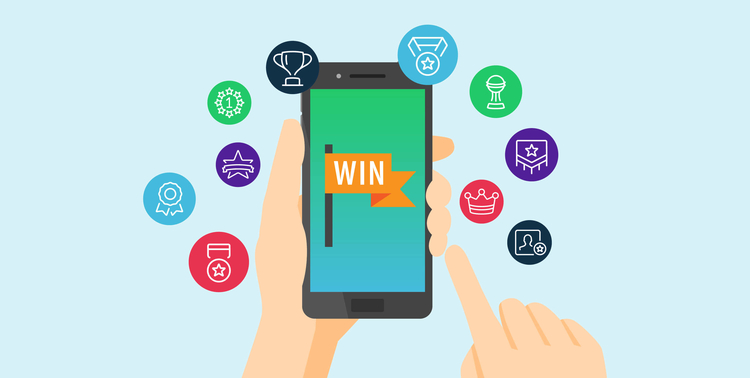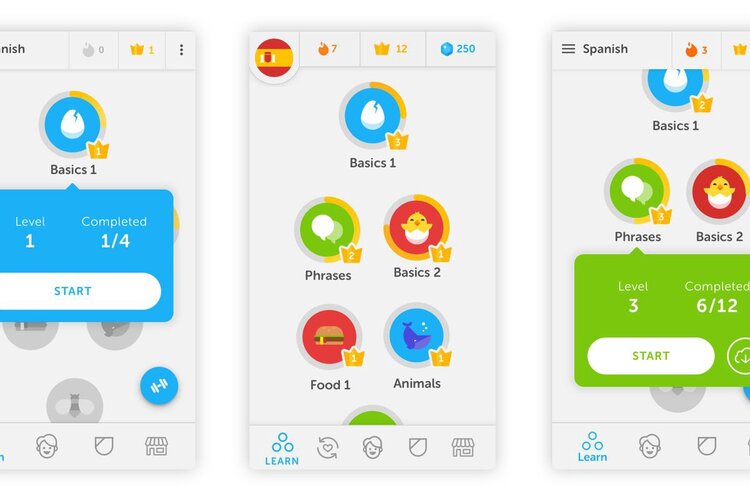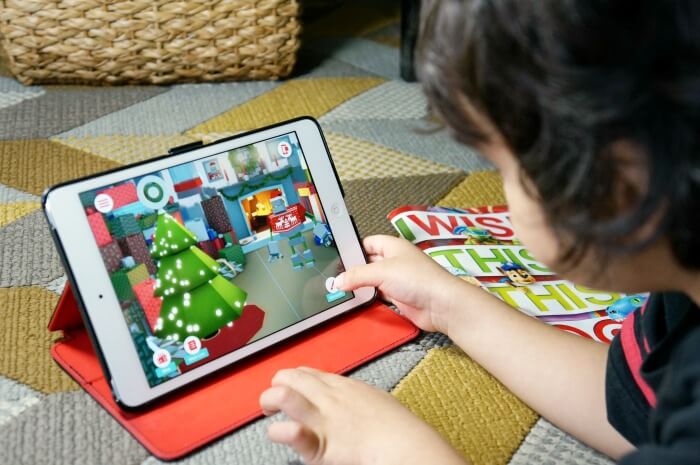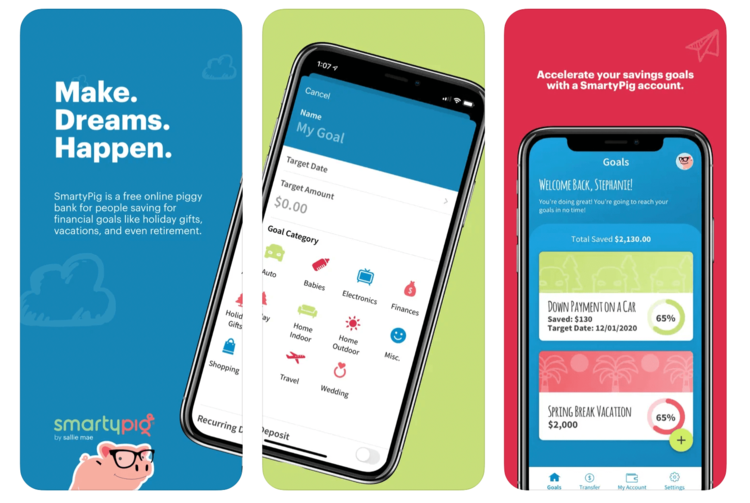App gamification has become a big buzzword in recent years. With so many mobile apps out there, it can be hard to stand out from the crowd. Users want something exciting and challenging to keep them engaged. That’s why many companies are adding gamification in their mobile apps.
In this article we’ll explain why gamification is one of the most powerful user engagement strategies. And how you can leverage location-based technology to give your users the best app gamification experiences. We’ll also list some smart examples of mobile apps using gamification to great effect.

What is gamification in an app?
Gamification is the process of implementing gaming elements in your mobile app. It helps to boost engagement and keep users focussed on their goals. Importantly, it’s a big part of optimising your app for retention rates, user sessions, app churn and return on ad spend. All while improving that all important user experience.
According to Statista, the mobile games market is booming. In fact, the number of mobile gamers worldwide is expected to reach 2,220.8 million by 2025. It’s clear to see that people love games, so it’s no wonder that many Mobile App Development companies, even non-gaming brands such as restaurants and retailers, are adding app gamification to their mobile apps.
Why use gamification in an app?
Adding gaming elements such as real-world quests or rewarding activities to a mobile app is a quick and cost-effective way to boost user acquisition and engagement. Businesses can not only benefit from higher installs, more permission opt-ins and sticker apps, but they can also make the most of increased revenue generated by in-app purchases & advertising, along with higher in-store footfall and stronger brand loyalty.
What’s more, adding gamification in apps can provide a wealth of valuable customer data. This gives brands a better understanding of their customers’ real-world behavior, enabling them to personalize the experience and serve location-based notifications and experiences when and where they are most relevant.
The benefits of gamification in apps
- More app installs
- A more satisfying user experience
- Increased brand awareness
- Incentivizes users to stay engaged for longer
- Better retention and lower churn
- Mobile gamification can be used for marketing purposes
- Unlocks user creativity
- Make onboarding fun for users
How location can enhance gamification apps
Combining gamification apps with real-world location can unlock a whole new level of fun and engagement for your app users. Geofences and other location-based technologies can be leveraged to enable app users to engage with their surroundings, complete tasks or be prompted to visit specific locations to retrieve rewards.
Here’s how it works. Geofences can be drawn around specific areas such as stores, parks, sidewalks and more, and be set up to trigger in-app events such as location-based activities, augmented reality experiences or earning rewards based on visit frequency when a user triggers a geofence.
The location gaming experience can be further enhanced with beacons technology which operate at smaller distances, making them better for targeting micro locations such as inside a store or restaurant.
When adding location to gamification apps, companies need to think about things like easy integration of location-based features, the level of accuracy, the types of notifications to send to users, and how to set up triggers for in-game events. It’s also vital to choose a geofencing platform such as PlotProjects that doesn’t rely on battery-draining GPS.
Want to find out more about how to set up location in gamification apps? Check out our handy guide.
Gamification ideas for apps
Here are some popular gamification ideas that can be used to increase retention and add fun to the overall user experience.
User rewards
You can reward users for their in-app activity such as performing certain tasks or actions. This keeps users engaged for longer and is a great way to motivate users while showing your appreciation for their loyalty.
Progress display
A progress display keeps users motivated and engaged. In a learning app it could help them set and keep track of goals such as practicing daily learning habits. In a fitness app it can be used to track run times, calorie counts and the number of workouts completed over a certain time period.
Location-based games and tasks
You can delight users with location-based challenges such as rewarding them with discounts for certain in-store tasks. Burger King is a great example of an app using location-based tasks to drive engagement and sales. During their Whopper Detour, they rewarded customers with a 1-cent burger. But customers had to drive to McDonals to collect the discount!
Badges
Badges are a great way to reward users for certain tasks and milestones. They can be kept visible on their profile and motivate users to want to acquire more. You can invite users with certain badges to get access to exclusive content and tools, and even inspire them to want to share their efforts with their network.

13 app gamification examples
There are so many ways to implement gaming elements into your app. Here’s some examples of how big brands are using app gamification as an effective strategy for their mobile apps.
Nike Run Club
The Nike Run Club app uses gamification to encourage mobile app engagement and retention. Through the app, Nike is able to collect valuable data about its users’ chosen sports, activity levels and preferred sportswear styles. By using this data to personalize the user experience, Nike says its Plus members spend three times more than guest customers.
Shopkick
Shopkick uses app gamification and rewards in its mobile app to drive both traffic and sales. The Shopkick app sends notifications to consumers telling them where they can collect points, known as kicks’ by going to a retail location. While in store the user can open the app to see the items offering kicks, find the product in-store, scan it with their mobile phone camera, then redeem all kicks earned for gift cards for their favorite brands.
By turning the shopping experience into a digital scavenger hunt, the Shopkick app gamifies a regular shopping experience into something fun and rewarding. At the same time, partner retailers are rewarded with increased footfall, sales and brand awareness.
Target
A great app gamification example, Target’s Holiday Wish app was an animated game experience allowing little ones to create Christmas wish lists and send them to Santa. The retail giant saw nearly 75,000 downloads of the app, with more than 100,000 wish lists created, as well as 9,200 new Target.com accounts.
Over a period of six weeks from the app launch to the close of the holiday season, nearly 1.7 million items were added to Target guest wish lists, with a sales potential of $92.3 million.

Waze
Navigation app Waze is another example of app gamification to boost engagement. Using geofencing, the company works with big brands such as Shell and more to literally put them on the map.
With the help of Waze Ads, 76 Fuel targeted their marketing campaign TANK5 to drivers in California by pinning their logo to gas stations on the Waze app. Drivers were offered the chance to take part in a competition for a chance to win money at those gas stations. As they approached a 76 gas station, drivers would receive a location-based notification promoting the game.
Urban Sport Club
Urban Sport Club developed a rock climbing game app to increase user engagement and lead generation. Players were challenged with climbing as high as possible in order to win a 3-month contract with the sports company.
The campaign boosted engagement, with the majority of users playing multiple times. It was a great way for Urban Sports Club to gather potential new leads, capture player insights, engage their community and present their value proposition in a unique and engaging way.
Duolingo
Duolingo is one of the most famous mobile apps to drive engagement through gamification. The language app’s Associate Product Manager, Zan Gilani said, “Motivating yourself to learn is very hard and learning a new language is even harder, especially when you are doing that online on your own, so we realized early on that we need to encourage people to form a daily learning habit. We found that the most effective techniques for this came from the gaming world.”
McDonalds
The McDonald’s app uses location to power an array of in-app experiences, activities and notifications. Users can find restaurants nearby, receive location-based deals and discounts and play location-based games such as seeking out Monopoly-inspired Chance Cards to unlock rewards.
SmartyPig
Fintech apps like SmartyPig are finding ways to use app gamification to increase their app’s stickiness and improve user experience. The savings app helps users reach their financial goals and build funds over time in a fun and engaging way. Users can use progress displays and goal-setting features to receive rewards and motivate them to reach their targets.

Starbucks
The Starbucks app boasts millions of downloads. One of the significant drivers of its popularity is the brand’s continual development of new features that drive installs and engagement. Along with games and competitions, the app functions include mobile payments, pre-orders to eliminate customers getting stuck in the coffee queue, rewards tracking and event notifications.
The Starbucks app leverages geofencing to alert customers of nearby locations, and send location-based deals and discounts to nearby app users. In all, this allows Starbaucks to increase footfall, engage customers and improve the overall customer experience.
Domino’s Pizza
Domino’s Pizza created a gaming app, Pizza Hero, allowing users to create their own pizza in the branded gaming app. As a result of this campaign, Domino’s Pizza was able to increase sales revenue by a whopping 30%.
Dunkin Donuts
An early participant in mobile marketing, Dunkin Donuts uses mobile app gamification to target on-the-go customers with discounts, fun rewards and convenient location-based experiences. With DD Perks, users can also have fun earning rewards on every Dunkin Donut visit, plus users can get exclusive location-based deals and discounts.
In addition, users were offered a one-day Snapchat geofilter to boost engagement with its National Coffee Day promotion. Users were able to visit a store to use the filter and get a free coffee for taking part in the location-based mobile engagement event.
Burger King
One of the best app gamification examples, Burger king took its trolling game to the next level in its famous Whopper Detour campaign. The brand leveraged its mobile app to send alerts to any customers who triggered a geofence around a McDonald’s branch. The app offered them a deal to boycott McDonald’s and instead buy a Whopper for just one cent from the nearest Burger King.
Only made possible by geofencing, the Whopper Detour promotion was a huge success. Burger King’s chief marketing officer reported that customers redeemed the promotion at a rate of around 20 times more than any other previous in-app offer.
Using PlotProjects for mobile app gamification
PlotProjects offers all the tools and features you need to to start building location-based games into your mobile apps. Here’s a look at why you should use the PlotProjects platform when implementing mobile app gamification.
Build unlimited gaming zones
Easily build unlimited geofenced zones for treasure hunts, quests and unlocking rewards, with geofences that range from 50m to 50,000m. Create zones wherever you want them, and easily avoid undesirable locations.
Create highly-accurate gaming experiences
With accuracy down to 10 meters, you can create highly-accurate location experiences and activities for your app users. What’s more, our platform doesn’t rely on GPS, so your app won’t cause battery drain.
Send relevant notifications
Send welcome messages, provide clues, deliver marketing notifications and more based on the user’s exact real-time location. With handy features like ‘Cooldown’ and other anti-spam tools, you can avoid spamming your users.
Boost downloads & location opt-in
By offering fun and rewarding location experiences and notifications, users will want to download your app and opt-in for location permissions and notifications.
Valuable customer insights
Adding geofencing to your app makes a large amount of customer data available. This can be used to customize and enrich their experience, leading to a more enjoyable and profitable mobile app.
Trigger events in a variety of locations
Geofencing and Bluetooth beacons can complement each other to target locations and trigger notifications in a variety of different settings. Bluetooth beacons operate at smaller distances, making them better for targeting micro locations.
Nail your marketing campaigns
Geofencing makes it possible to monitor each stage of the user’s gaming experience from start to finish, as well as tracking dwell time, visit history and more. Use these insights to learn about your users and refine your marketing campaigns.
Get started with app gamification
Ready to get started? Powering your app with location-based app gamification is a powerful and cost-effective way to boost app downloads and engage your users. If you need help getting started or if you want to find out more about how our platform can drive results for your business, contact PlotProjects today.
You can try our demo app for free, or download one of our customer’s apps to see how it works.
